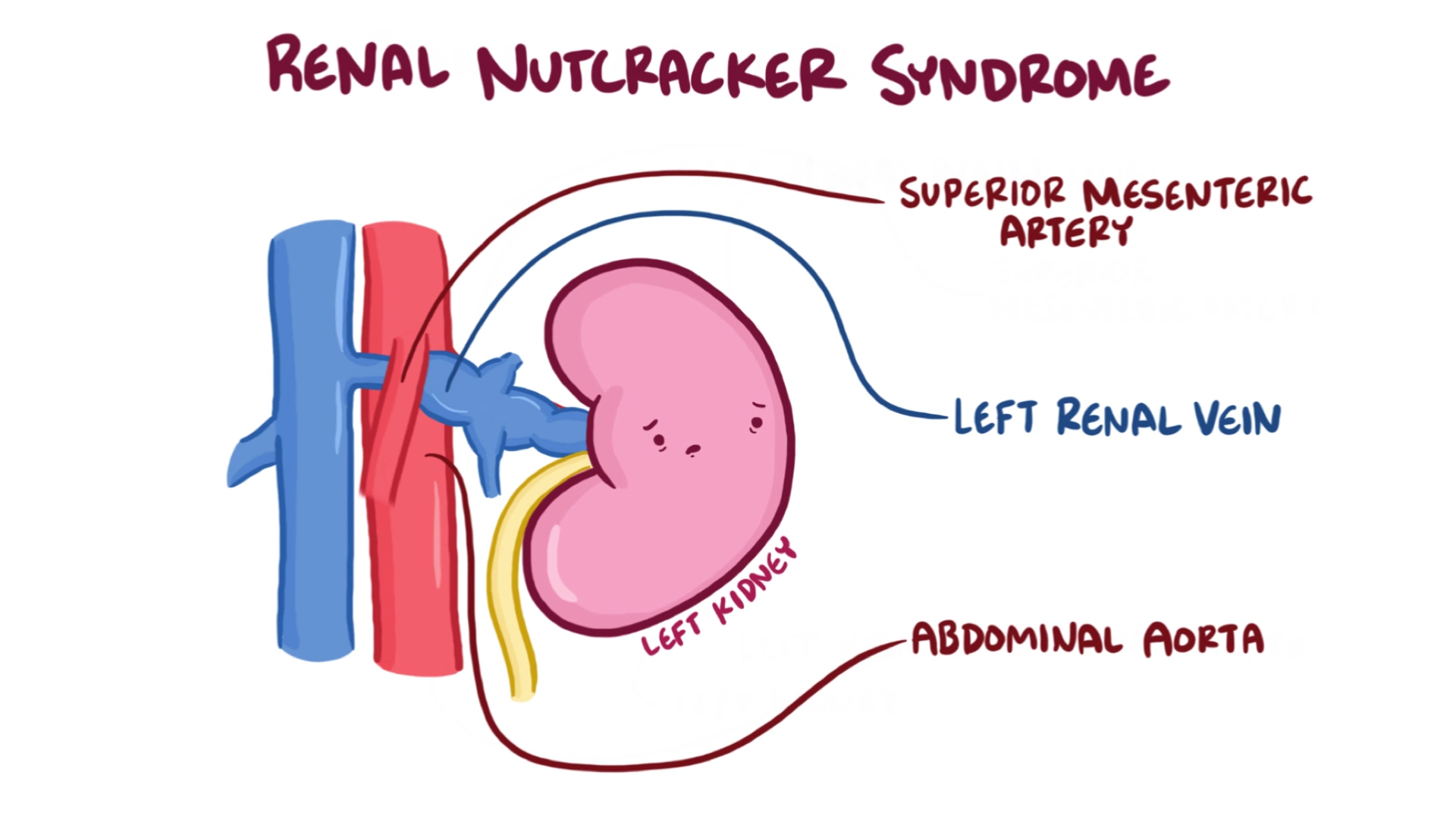Nutcracker Syndrome Overview
What is Nutcracker Syndrome (NCS)? Symptoms can fluctuate quite drastically and it’s not unusual for patients to be entirely asymptomatic at first. Some people don’t have any symptoms, though others may have severe symptoms that affect them daily. Other symptoms could be chronic pediatric fatigue and gastrointestinal symptoms but precise reason in these types of cases isn’t obvious. The most usual symptom of this syndrome is abdominal pain, but it may also occur without any indicators.
The syndrome is distinguished by means of a variety of symptoms that may vary. This syndrome isn’t possible to quantify concerning incidence as it is this kind of unusual presentation. When it leads to clinical symptoms, an intravascular stent should be considered. Nutcracker syndrome isn’t hereditary, even though it might be triggered by multiparity or pregnancy. It is a rare diagnosis and may manifest in unusual ways. The nutcracker syndrome is an uncommon condition. Nutcracker syndrome is an uncommon disorder that may affect adults or children, although the prevalence and specific causes are unknown.
The syndrome is really rare, but might affect adults and kids, both. This syndrome causes impaired blood circulation, together with swelling of the distal region of the vein. Nutcracker syndrome can have many clinical manifestations.
Its natural history isn’t well understood and there’s a wide spectrum of clinical presentations. The typical path of the nutcracker syndrome isn’t clear because it mostly remains undiagnosed for a very long time period on account of the different symptoms that may change from one person to another. Following are the usual symptoms that were studied in the nutcracker syndrome. That journey always starts with a medical consultation. The reason this happens is a health mystery but it’s believed that abnormal organogenesis during fetal life is the origin of the issue.
The most frequent presentation is hematuria. CONCLUSION Although NCP and NCS are recognized for quite a long time, might be encountered by physicians in a number of disciplines, and cause significant morbidity, understanding of these entities is limited. Urological investigations These are only utilized in scenarios of hematuria, which is usually microscopic. Treatment decision ought to be based on the intensity of symptoms and their expected reversibility concerning patient’s age and the phase of the syndrome. The diagnosis procedure includes your doctor asking you about your symptoms and checking your health care history followed by a concrete examination of the individual. This indicators and symptoms information for Renal nutcracker syndrome was gathered from several sources, might not be fully accurate, and might not be the complete collection of Renal nutcracker syndrome signs or Renal nutcracker syndrome symptoms. There are a lot of treatments offered to patients that are experiencing the nutcracker syndrome.
The precise prevalence rate of the nutcracker syndrome is unknown due to the shortage of any correct diagnostic criteria and varieties of symptoms that can be seen in different conditions also. While weight reduction may be helpful in cutting symptoms, the function of acid suppression therapy to lessen esophageal reflux is still uncertain. It can occasionally appear after rapid weight reduction, or following pregnancy. It’s observed to occur mostly after massive weight reduction within a brief time. Recovery from surgery is contingent on the sort of surgery and your general wellness.
The managing of patients with nutcracker syndrome has to be individualized. Although less invasive, risks involved include incorrect positioning of the stent in addition to stent dislodging and migration to the correct atrium. With any medical procedure, there’s a theoretical risk of bleeding together with infection. This disease can happen anytime during an individual’s life but the maximum incidence of this disease are found in adults in their 20s-30s. Correcting the condition is dependent on the cause. It was believed to be a rare condition.
When your left renal vein becomes compressed, blood can’t flow through it correctly. Usually, the left renal vein brings blood from the left kidney and in the inferior vena cava, the human body’s biggest vein. Venous blood might also be directed towards veins formed as a consequence of the greater blood pressure, which might donate to symptomatic relief for individuals as they age.
Under certain situations, the patient may not even require the treatment like if the individual is 18 decades old or younger or an adult who has mild symptoms as the syndrome is very likely to receive resolved by itself in such situations. In the majority of cases, physicians will suggest a mix of multiple advanced techniques because although stents are excellent for short-term improvements, it’s possible for them to fail. Your health care provider might suggest an assortment of surgical procedures to ease pressure on the vein. Your physician can insert it by cutting a little slit in your leg and utilizing a catheter to move the stent into the appropriate position within your vein. You and your health care provider should talk about the risks and advantages of this procedure, and other therapy options. Medications that decrease blood pressure like ACE inhibitors may also be utilised to lessen the proteinuria.


